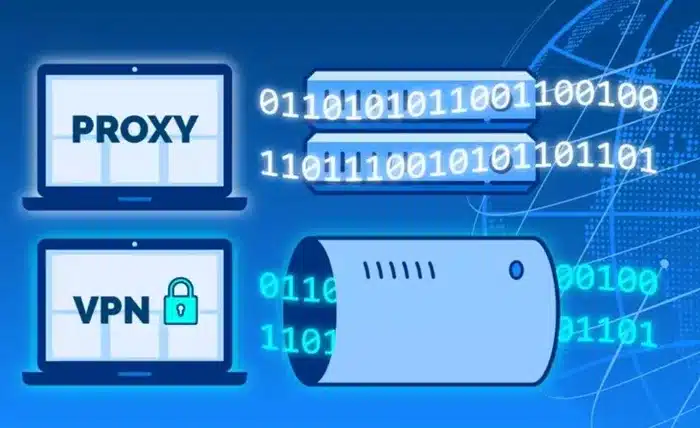VPN stands for Virtual Private Network. It creates a secure tunnel for your data, encrypting it and hiding your IP address. A proxy is an intermediary server that forwards your requests to the destination, masking your IP in the process. Both tools enhance privacy and security, but they work differently. When used together, they provide layered protection that can be useful in various scenarios such as bypassing geo-restrictions and securing sensitive data.
Why Combine VPN and Proxy?
Using a VPN with a proxy can give you added anonymity. The VPN encrypts your connection, while the proxy adds another level of masking. This can help in situations where one layer might fail or be detected. It also allows for more flexible configurations, like routing specific apps through the proxy while all traffic remains protected by the VPN.
Enhanced Privacy
Combining both ensures that your IP address is hidden behind multiple layers, making it much harder for anyone to track you. Your actual location stays concealed from websites and services you access.
Bypass Regional Restrictions
Some websites block VPNs but allow proxies, or vice versa. Using both helps navigate these restrictions effectively, ensuring access to the content you need.
Layered Security
If one layer fails, the other can still provide protection. For example, if a proxy connection drops, your VPN can still keep your data encrypted and secure.
How VPN and Proxy Work Together
The usual setup involves connecting to the VPN first. This encrypts your data and hides your IP. After that, you configure the proxy. The proxy then handles the outgoing requests, adding another layer of masking on top of the VPN.
VPN First, Then Proxy
This is the recommended order. Your traffic is encrypted by the VPN before reaching the proxy. The proxy sees the VPN server’s IP rather than your real one, giving you two layers of masking.
Proxy First, Then VPN
This setup is less common. Here, the proxy forwards traffic to the VPN. It can be useful in certain corporate settings but is generally harder to configure securely.
When to Use VPN and Proxy Together
There are specific use cases where using both is beneficial:
Accessing Restricted Networks
If you’re trying to access a network that restricts VPNs, using a proxy on top of your VPN connection can help disguise it.
Downloading or Streaming Content
Using both can help you access more regional content and reduce the risk of throttling by your ISP.
Handling Sensitive Transactions
For critical tasks like financial transactions or handling confidential business data, the added protection can be valuable.
Setting Up VPN and Proxy Together
Follow these general steps to use both services:
1. Choose Trusted Services
Select a reliable VPN and a trusted proxy provider. Avoid free services that may log or sell your data.
2. Install and Connect the VPN
Download your VPN app and connect to a server of your choice. Ensure that the kill switch is enabled if available to prevent leaks.
3. Configure the Proxy
Set up your proxy in your browser or application. Input the proxy server address and port as provided by your proxy service.
4. Test Your Connection
Visit an IP checker site to confirm that both your VPN and proxy are active. Your IP should reflect the proxy’s location, not your real one.
Common Issues and Solutions
Slow Connection Speeds
Using both services can reduce speed due to extra routing. Choose servers close to your location and ensure they are not overloaded.
Connection Drops
Enable kill switch features on your VPN and monitor proxy connections. Automatic reconnection options help maintain privacy.
Compatibility Problems
Some apps may not work well with both a VPN and proxy. Use split tunneling if available to exclude such apps from VPN routing.
Security Considerations
While combining VPN and proxy offers more protection, it’s not foolproof. Be aware of DNS leaks and WebRTC leaks. Use tools that block these or disable WebRTC in your browser. Also, ensure your proxy does not log your traffic.
Best Practices
Use No-Log Services
Choose VPNs and proxies that promise not to log your data. This ensures that even if servers are compromised, your information stays private.
Regularly Update Software
Keep your VPN and proxy software updated to protect against vulnerabilities and security holes.
Test for Leaks
Regularly check for DNS and IP leaks to ensure your setup is secure. Many online tools can help you verify this quickly.
Conclusion
Using a VPN and proxy together can significantly enhance your online security and privacy. By following best practices and setting them up carefully, you can enjoy the benefits of layered protection. Always choose trusted services and remain vigilant about potential leaks and compatibility issues. This setup is ideal for those who require an extra level of privacy when browsing, streaming, or handling sensitive data.


